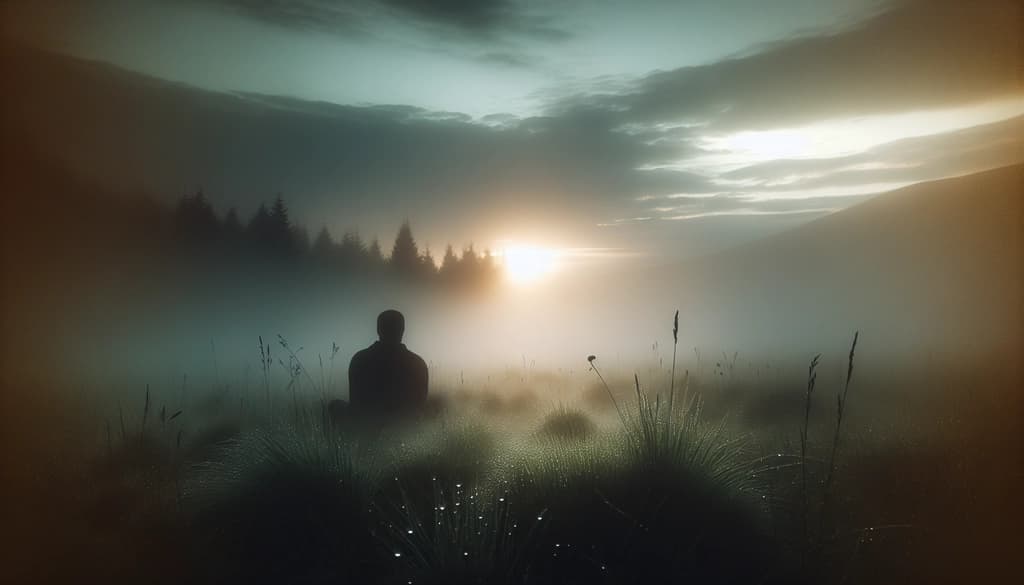Freedom from Suffering: The Heart of Liberation and the End of Dukkha

The Many Faces of Suffering: Understanding Dukkha
Suffering, or dukkha, is deeper than what we often imagine; it is not only pain but the quiet friction, the sense that something isn’t quite right, present even in pleasant moments. It is the gnawing hunger of wanting, the ache of change, the flutter of anxiety that shadows joy, the subtle unease of life that is always shifting.
Dukkha, in the Buddhist tradition, is not merely agony—it is the persistent dissatisfaction woven into the fabric of ordinary experience. It is like wearing shoes half a size too small: sometimes the pinch is sharp, sometimes it is dull and easy to overlook, but it is always there until we notice. If you'd like to go deeper into this subtle concept, you may find it illuminating to explore the meaning of dukkha and notice how the unspoken hum of dissatisfaction shapes so much of our experience.
Curiosity about the roots of suffering itself often arises on this inward path. If you long to understand the deeper origins and patterns, consider visiting Why do we suffer to reflect on your own journey.
Samsara: The Cycle that Binds
The concept of samsara evokes wandering—circling through lifetimes, habits, and thoughts, grasping for what cannot stay. Samsara is the endless turning of hope and fear, getting and losing, pleasure and pain. It is the dance of attachment and aversion, the way we get caught by what we crave or try desperately to avoid.
To be caught in samsara is not merely a mythic fate; it is the human mind tumbling through plans and regrets, losing itself in past disappointments and future anxieties. Each rebirth can be as simple as a thought pulling us away from the present, as subtle as a story we tell ourselves again and again.
Roots of our suffering are tangled with desire and resistance. For many, seeing the desire and suffering connection is an important step in moving toward freedom.
Nirvana: Freedom as Release, Not Escape
Nirvana is often misunderstood as some faraway paradise or ultimate achievement. Yet the image offered by Buddhist wisdom is simpler, and more subtle: nirvana is release. It is not an escape from life, but a letting go of the knots of craving, aversion, and delusion.
Imagine a hand unclenching from a stone it’s held for so long it forgot it was holding it. That release, that sigh of relief, is the flavor of freedom from suffering. “Nirvana” literally means “blowing out”—like a candle quietly extinguished, leaving soft presence and peace.
For a wider view of how this teaching fits into the living map of Buddhist insight, you might be drawn to the Four noble truths explained, where the roots, causes, and end of suffering are honored in depth.
Some traditions speak of moksha, or liberation—spacious and luminous release from the cycle of birth and death, echoing the freedom described in nirvana. To glimpse this concept through another cultural lens, visit What is moksha and notice what is shared, and what is unique, on the path to liberation.
How Might We Approach Liberation?
You need not uproot yourself or renounce the world to taste freedom’s promise. Freedom from suffering begins moment by moment, in the honest recognition of dukkha, in the gentle softening of clinging.
You might try noticing your breath when a wave of dissatisfaction rises, or feel into the ache of wanting and simply acknowledge, “This is suffering; this too belongs.” Sometimes, letting the breath out slowly, feeling the belly soften, is itself a small liberation—a taste of nirvana in the midst of ordinary life.
Daily practice is less about striving for perfection and more about touching each moment with tender curiosity. Eating, walking, waiting in line, feeling joy or sorrow—all are invitations to recognize dukkha, and to loosen the grip, however softly. When you recognize craving and clinging, you may want to explore letting go of attachment through mindful reflection.
Misconceptions: Liberation Is Not Never Feeling Pain
It’s easy to imagine that “freedom from suffering” means never feeling pain, loss, or grief again. But liberation is not immunity—it is intimacy. The end of suffering is not the erasure of difficulty, but the end of being bound by it. It is meeting life as it changes, with an open heart, knowing that pain arises and also passes, like mist in sunlight.
Freedom is the gentle capacity to be with what is, without being swept away or hardened. The struggle isn’t being human—the struggle is forgetting the possibility of release. To explore practical ways to soften suffering, you can read How to end suffering and ease your burden, one moment at a time.
“She once believed her restlessness was a flaw to overcome. But sitting quietly, she learned to meet the ache itself, to rest with longing, and in that resting, to feel—at last—the beginning of freedom.”
The Wider Ripple of Inner Freedom
What changes when the knots of suffering begin to untangle? The world softens. There is more space between thought and reaction, more compassion for others dancing in their own cycles of wanting and fear. Relationships become kinder, patience deepens, laughter comes easier. Neuroscience gently affirms: the brain grows more resilient, new pathways form, suffering’s grip loosens, and well-being arises more often.
Liberation, in small or deep ways, need not be an unreachable idea. It is seeded in awareness, watered by kindness, and revealed in every ordinary moment touched by presence.
May You Discover Release, One Breath at a Time
May you meet your dukkha with honesty and care. May you taste the quiet freedom that comes not from running away, but from relaxing your grasp. Allow yourself the possibility that release is always, already near—just a breath, or a soft gaze, away.
